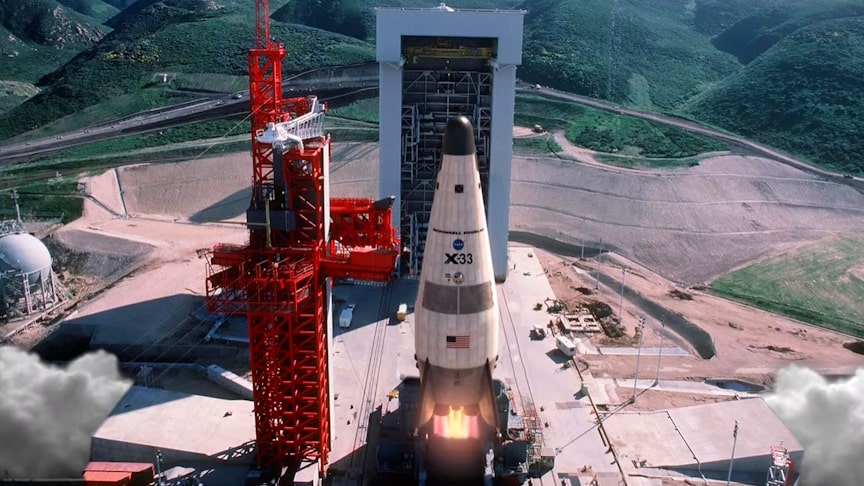Single-Stage-To-Orbit (SSTO) Reusable Launch Vehicle (RLV). McDonnell Douglas submitted a vertical landing configuration design which used liquid oxygen/hydrogen engines. NASA considered design submissions from Rockwell, Lockheed Martin, and McDonnell Douglas.
source.image: Hazegrayart
NASA selected Lockheed Martin’s X-33 design on 2 July 1996. The RLV technology program was a cooperative agreement between NASA and industry.
The goal of the RLV technology program was to produce significant reductions in the cost of access to space, and to promote the creation and delivery of new space services and other activities that would have improve U.S. economic competitiveness.
Advertisement
Failures of its 21-meter wingspan and multi-lobed, composite-material fuel tank during pressure testing ultimately led to the withdrawal of federal support for the program in early 2001. Lockheed Martin has conducted unrelated testing, and has had a single success after a string of failures as recently as 2009 using a 2-meter scale model.











